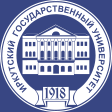List of issues > Series «History». 2025. Vol 52
Distinctive Signs of Jewish Segregation in the Czech Lands
in the Middle Ages and Modern Times
Author(s)
O. B. Keller
Abstract
The article by Doctor of Historical Sciences, Professor O. B. Keller is devoted to the spectrum of “insignia” of the Jewish population that were relevant for Jews living in the Czech lands
(Bohemia, Moravia) in the Middle Ages and Modern Times. The very idea of “differentiation” of
people comes to the Christian world from the world of Islam. And what was the reason for the appearance of “insignia” for Jews? Their appearance was associated with the prescription of Pope Innocent III “to wear special clothes for Jews and Muslims that distinguish them from Christians.” The
idea of Pope Innocent III was voiced on November 15, 1215 at one of the sessions of the Fourth
Lateran Council in Rome and, without any doubt, can be attributed to the beginning of the “segregation” of the Jewish population as early as the 13th century.
About the Authors
Keller Olga Borisovna,
Doctor of Sciences (History), Professor,
Department of Modern and Contemporary
History,
Belarusian State University,
6, Krasnoarmeyskaya st., Minsk, 220030,
Republic of Belarus,
e-mail: olga.keller@mail.ru
For citation
Keller O.B. Distinctive Signs of Jewish Segregation in the Czech Lands in the Middle Ages and Modern Times. The Bulletin of Irkutsk State University. Series History, 2025, vol. 52, pp. 44-49. https://doi.org/10.26516/2222-9124.2025.52.44 (in
Russian)
Keywords
Insignia, Czech Lands, Middle Ages, Modern Times, Jewish headdress of white or yellow color, triangular cap, special hood, veil with yellow stripe, yellow ring on the left side of the chest, yellow or green ring collar, yellow stripe (5×7 cm).
UDC
94(437=411.16)"04/18"
DOI
https://doi.org/10.26516/2222-9124.2025.52.44
References
- Garkavi A.J. Skasaniya evrejskich pisatelej o Khasarakh i Khasarskom zarstve [Tales of Jewish writers about the Khazars and the Khazar kingdom]. Pismo Khasdai Ibn-Schapruta khasarskomu zaryu [Letter from Khazdai Ibn Shaprut to the Khazar king]. St. Petersburg, Тipografiya Imperatorskoj Akademii Nauk Publ., 1874, vol. 1, pp. 162. (in Russian)
- Nasarenko A.V. Nemezkie latinoyasycnye istocniki IX-XI vekov. Тeksty, perevod, kommentarij [German Latin-language sources of the 9th-11th centuries. Texts, translation, commentary]. Raffelstettenskij tamoschennyj ustav [Raffelstetten Customs Regulations]. Моscow, Nauka Publ., 1993, pp. 59-100. (in Russian)
- Braun B. One empress and two emperors: Maria Theresa and her co-regents Franz Stephan and Joseph II. Bielefeld, Transcript Publ., 2018, 309 p. (in Germany).
- Champagne M.-Th., Resnick I. M. Jews and Muslims under the Fourth Lateran Council (1215). Turnhout (Belgium), Brepols Publ., 2018, 280 p.
- Wattenbach W. The life of Bishop Adalbert of Prague. Translated from the edition of Monumenta Germaniae by H. Hüffer. Leipzig, Verlag der Dykschen Buchhandlung Publ., 1891, 2nd ed., 54 p. (in Germany)
- Fejtö Fr. Joseph II: Portrait of an enlightened despot. München, Matthes und Seitz Publ., 1987, 468 p. (in Germany)
- Fuchs M. Emperor Ferdinand I: a Central European ruler (congress proceedings of the “Conference on the occasion of the 500th birthday of Ferdinand I”, which took place from October 17th to 18th, 2003 in Budapest at the Balassi Balint Institute). Münster, Aschendorff Publ., 2005, 367 p. (in Germany)
- Jacob G. Arabic reports from envoys to Germanic royal courts from the 9th and 10th centuries. Report of Ibrahim Ibn Jakub from his journey to the Slavic lands in the tradition of al-Bekri. Berlin, De Gruyter Publ., 1927, pp. 12-18. (in Germany)
- Boretius A., Krause V. MGH Leges II. MGH Laws II. Chapters of the kings of the Franks. An inquiry into the tolls of Raffelstatt. Hannover, Hahn Publ., 1897, vol. 2, pp. 249-252. (in Latin)
- Moore J.C. Pope Innocent III (1160/61-1216): to root up and to plant. Leiden, Boston, Brill Publ., 2003, 316 p.
- Putik A., Sixtova O. The history of the Jews in Bohemia and Moravia from the beginnings to emancipation: guide through the exhibition. Newly designed permanent exhibition in Maisel Synagogue opened on April 18th, 2001 (Jewish Museum in Prague). Prague, Jewish Museum Publ., 2007, 107 p. (in Germany)
- The fourth Lateran Council: institutional reform and spiritual renewal. Proceedings of the conference marking the eight hundredth anniversary of the council, organized by the pontificio comitato di scienze storiche, Rome, 15-17 October 2015. Eds. Melville G., Helmrath J. Affalterbach, Didymos-Verlag Publ., 2017, pp. 352.
